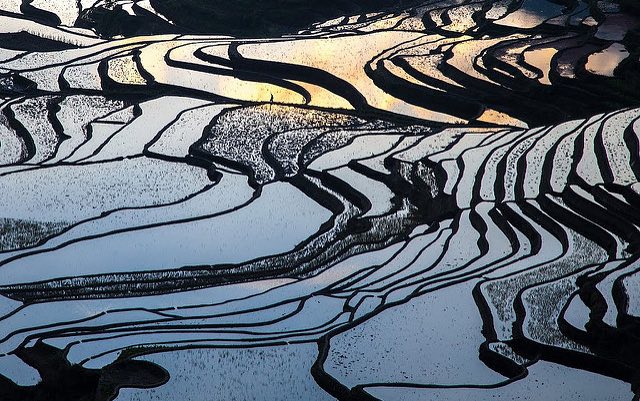Food production systems are particularly vulnerable to adverse impacts of climate change, and it is one of the key factors affecting food security in China. Rising temperatures reduce the growth period of grains, leading to average reductions in yields, while frequent seasonal drought places stress on the water supplies available for irrigation. Safeguarding food security, particularly food production systems, from the adverse impacts of climate change is a fundamental priority of the 2015 Paris climate agreement.
In China, climate change-driven seasonal drought could lead to substantial losses of nearly 8 percent by 2030 in yields of three main crops—rice, wheat and corn—despite adoption of water-saving techniques, one of the scenarios in our research reveals. Corn yields are likely to suffer the most out of the three grains, with projected drop of nearly one-fifth of total production, followed by wheat, with a 4 percent decline, and rice, 1.5 per cent.
We obtained these results by assessing the impact of climate change on grain production and total land area sown in China by applying the Chinese Agricultural Policy Analysis model, in combination with agricultural census data, to conduct an equilibrium analysis under alternative impact scenarios and adaptation scenarios. The model covers the whole of mainland China and allows a bottom-up policy simulation. In addition to drought, we examined four other scenarios under climate change.
In the second scenario, we studied the impact of climate warming on grain production. Studies have shown such warming can shorten the growth period of local crops through early flowering and fruit-bearing, leading to a reduction in dry matter accumulation, seeds’ weight, and crop yields. Typically, a one degree Celsius increase in temperature in the full growth cycle can reduce the growth period of rice by nearly 4 days, wheat by 10 days, and corn by 7 days. This scenario revealed a drop in the yields of wheat, corn and rice by nearly 4, 3, and 2 per cent respectively.
Climate warming, though, has mixed results on grain production. While it may lower yields, it also generates abundant heat resources, providing alternative agricultural opportunities. To maximize those, China has developed several strategies to adapt to climate change, including: Adjusting cropping patterns, strengthening agricultural infrastructure, deferring sowing time to avoid high-temperatures or drought, water-saving techniques to increase the efficiency of water, and adopting mulching technology to prevent frost in late spring.
In the third scenario, we modeled the adaptation technique of water-saving irrigation and its impact on grain production. This showed an increase in yields of corn, wheat and rice of nearly 10, 2 and 1 percent respectively. A fourth scenario examined the impact of another adaptation measure, adoption of new crop varieties. The results showed a significant increase in corn, wheat, and rice yields of nearly 12, 3 and 15 percent.
Finally, the fifth adaptation scenario combined both water-saving techniques and adoption of new crop varieties. This integrated scenario can offset reductions due to climate warming and seasonal drought, and even lead to higher yields. It considers both the negative impact of climate change as well as adaptation strategies; thus it is closer to what is likely to happen in the future, and holds significance for policy makers. In this approach, our modeling showed that grain production is likely to increase by one-fifth, with the biggest yield increase in rice —nearly 30 percent. Corn yields go up 19 percent, and wheat 1.6 percent.
All these scenarios capture a corresponding change in sown area for the three grains across the country: In the two climate change impact scenarios, the total sown area shrinks marginally, whereas in the adaptation scenarios, we found an uptick of 3.48 percent when water-saving techniques are applied, and a decline in sown area of 6 per cent when new crop varieties are introduced. In the integrated scenario, the model projects an increase of nearly 2 percent in sown area.
Research has shown these two adaptation practices to be remunerative enough for farmers to adopt voluntarily. However, the success of climate change adaptation requires buy-in not only from farmers, but also from local communities and policy makers. To begin with, urgent steps should be taken to upgrade water infrastructure to reduce waste of resources and ensure adequate supply for irrigation of water-intensive crops such as rice. Research and agricultural extension services should be supported to promote breeding new varieties, backed by an improvised subsidy method and water-saving technologies. Local governments should also provide technical support to farmers to adjust cropping structures from water-intensive crops to drought-tolerant crops, especially in seasonal drought regions.
Man Li is a Research Fellow in IFPRI’s Environment and Production Technology Division. A version of her post first appeared on the Thomson Reuters Foundation News site.







